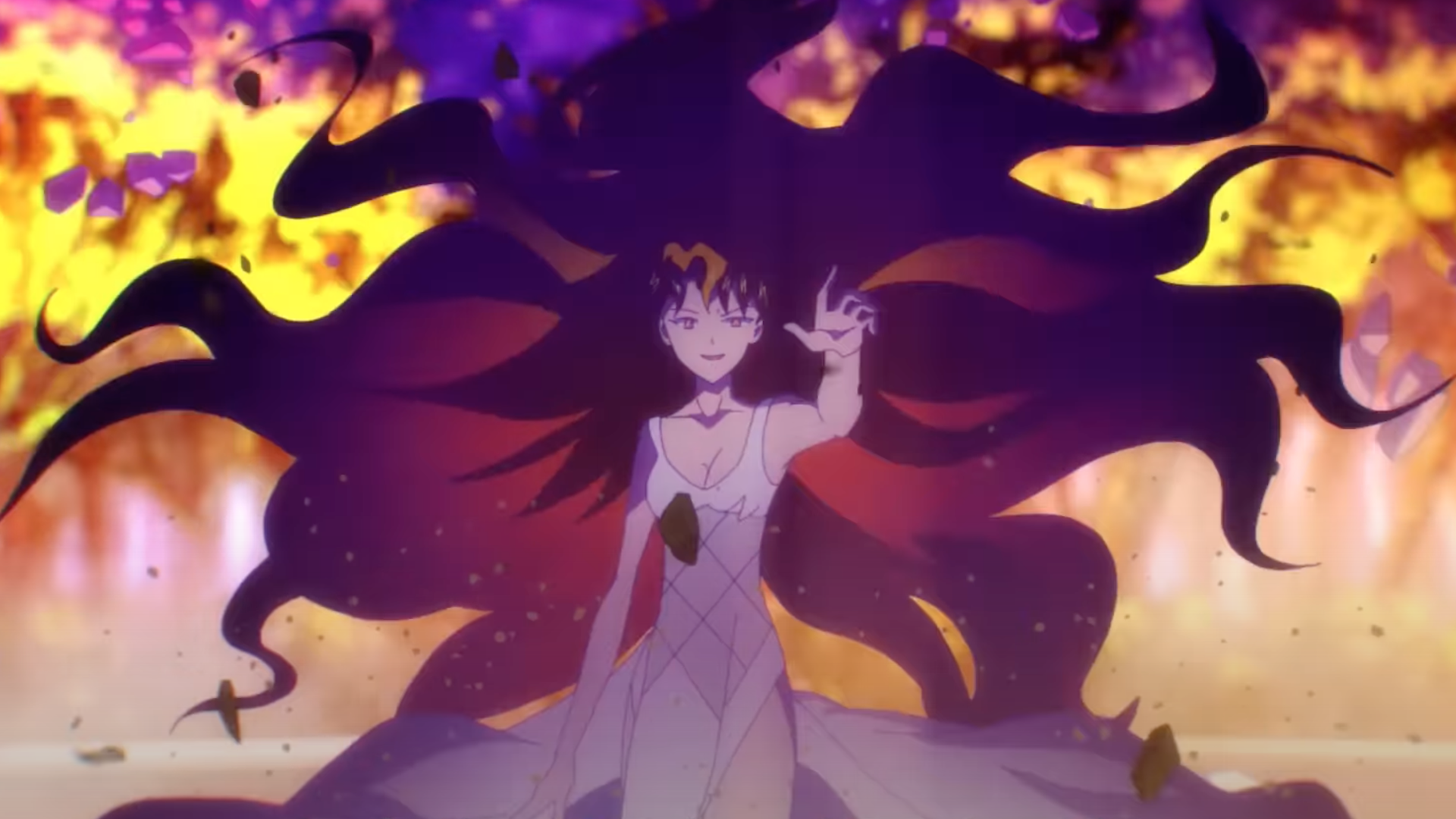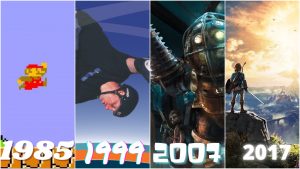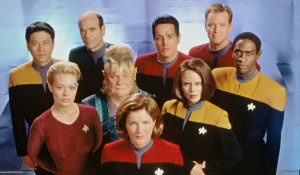
This Sailor Moon Cosmos The Movie review contains no spoilers.
Ten years after the premiere of Sailor Moon Crystal and three years after Netflix’s release of the Sailor Moon Eternal duology of films, a second duology—Sailor Moon Cosmos—faithfully adapts the fifth and final arc of Naoko Takeuchi’s iconic manga, bringing a definitive and satisfying close to the Crystalverse experiment.
The story of Sailor Moon Cosmos revolves around the revelation that there are Sailor Guardians not just for the planets of our solar system but all planets throughout the galaxy. Sailor Galaxia, a narcissistic nihilist bent on attaining godhood to destroy and remake the universe in her image, is capping off her campaign of galactic destruction by coming to Earth to harvest the Sailor Crystals, the last great MacGuffin required to realize her goal. This coincides with the arrival of The Three Lights, the hot new boy band at the top of the charts, who turn out to be a trio of leather-clad superheroines known as the Sailor Starlights, refugees from a planet Galaxia has already destroyed.
With the Starlights’ help, Sailor Moon and her mysterious new toddler sidekick, Chibi Chibi, take the fight all the way to Galaxia’s seat of power at the center of the Milky Way. There, before the Galaxy Cauldron where all Sailor Crystals (and thus astral bodies) are born and return to die, Sailor Moon faces her greatest test. And yes, of course we get a happy ending thanks to the power of love and friendship. This is Sailor freaking Moon. What kind of shake-up to that formula were you expecting? But how we get there is a fantastic journey filled with surprises with revelations from start to finish.
As a viewing experience, Cosmos delivers. Yasuharu Takanashi’s score really stands out in key moments, at points bold and epic and at others quietly moving. The direction is solid, careful to include key images from the manga without being shy about making changes for the benefit of the medium. Though, one thing I found curious was a sequence or two very visually reminiscent of Adolescence of Utena, a film directed by Kunihiko Ikuhara, Sailor Moon’s longest-running and best known director, infamous for leaving the show due to creative differences. A coincidence perhaps, but if so, a very striking one.
As for the animation itself, like Sailor Moon Eternal, it’s very good: smooth, consistent, and all the characters are on model. I would even go so far as to say both duologies’ animation is better than season 3 of Crystal—but not so much better as to be worthy of feature film releases, especially releases that took five years for Eternal and another two for Cosmos. Even more so when you compare it to the animation of the Sailor Moon films of the ‘90s, which, aside from some shaky CGI that has aged terribly, was rich, smooth, and absolutely gorgeous to look at. But again, that’s not to say Cosmos looks bad by any stretch, just not as good as it could have and should have, given the built-in fanbase, guaranteed revenue, and cultural significance of this powerhouse of a franchise.
Performances are on point in both the original Japanese and the English dub. Bringing in anime legend Megumi Hayashibara to voice Galaxia is perfect. As for Viz’s English cast, I’ve always been a fan. Any complaints I have there are few, far between, and milk spilt years ago, so if you want that critique, you can just check out my backlog of reviews. But bottom line: is Cosmos good? I’d say yes, but your mileage will definitely vary.
If you’re a hardcore moonie, especially if you favor the manga, you’re going to have a really good time. Cosmos adapts the Stars arc with a fidelity that the anime series, Sailor Stars (1996), couldn’t, with Takeuchi still writing the manga at the time the episodes went into production. Fans of the manga’s ending will find it deeply satisfying to finally see the Galaxy Cauldron, Galaxia’s castle, and several manga-exclusive characters who were introduced in its final chapters, long after the anime was in the can. Manga purists are going to love Cosmos, and those who favor the anime will have plenty of references and Easter eggs thrown in to appease. And, of course, kids will be able to look past the films’ flaws if they register at all.
On the other hand, if you’re an adult even partially literate in the language of cinema, you’re going to notice a few problems. Now, to be fair, this is less the fault of the films themselves than it is of their source material, but this isn’t about pointing fingers. It’s about a finished product. The pacing ain’t great. It’s just not. When adapting 500+ pages of manga into a combined runtime of approximately 160 minutes, you’ve either got to compress, omit, or change a few things, and Cosmos mainly relies on compression. The problem with this is that the dramatic peaks and valleys that would feel natural episode to episode now feel frenetic and rushed in a single narrative piece, at least in Part 1. Plot points and emotional beats rarely get an opportunity to land before it’s onto the next, because we’ve got a lot of ground to cover and only so much time and money to do it.
As for character development, most of the characters are essentially reduced to extended cameos toward the beginning of the first film and the end of the second. It’s just a really weird choice Takeuchi made to go into the concluding arc of a saga and clear the board of the ensemble the fans have spent the previous four arcs getting to know and love in order to focus on a handful of new characters who are never actually explored in any depth. Again, this is a 30-year-old manga problem, so it’s not news, but for those who haven’t already learned to overlook that particular flaw in the work, it’s likely to be a problem.
That said, know what you’re getting into and just enjoy the ride. It’s fun, it’s pretty, and there are more transformation sequences and attack moves than you’ll know what to do with. There will be light. There will be feathers. There will be tears and dreams and wedding bells and cosmic weirdness and everything you want from a Sailor Moon story. And honestly, if you don’t know what to expect by now, go back and watch Crystal and Eternal first. You might as well. Oh, and both movies have post-credit scenes. Don’t skip them. Just don’t.
And with that, I have one last thing to say. Those who have been following my career here on Den of Geek, love me or hate me, will know it began back in 2012 with breaking news of what became the Sailor Moon Renaissance: Viz’ acquisition of the license to resub and redub the ’90s anime and all the rights to Crystal. Because of Den of Geek, I have gotten to wax philosophical about some of my favorite franchises. I’ve interviewed cast and crew, some of whom have become my friends. Some commenters on my articles are still my friends to this day. I sat in on a dubbing session for Sailor Moon Crystal. I attended the red carpet premiere of Sailor Moon R: The Movie in L.A., and it was one of the Top 5 nights of my life.
I’ve had a wild ride, but the time has been long coming for me to move on, and I didn’t want to just ghost you all and end with a whimper. So, I’m ending where I began, closing out the Crystalverse and what will hopefully be only the first Sailor Moon Renaissance. But before I go, I want to thank Den of Geek for giving me this opportunity for the past twelve years and all of you for reading along. Now, into the Galaxy Cauldron I go to be remade for whatever’s next.
Both installments of Sailor Moon Cosmos The Movie are available to stream on Netflix.
Learn more about Den of Geek’s review process and why you can trust our recommendations here.
The post Sailor Moon Cosmos The Movie Review: A Fitting End To The Crystal Era appeared first on Den of Geek.






